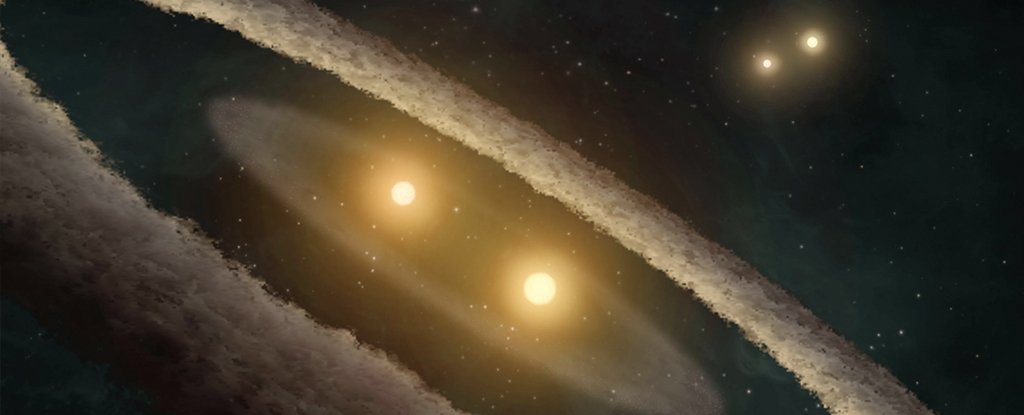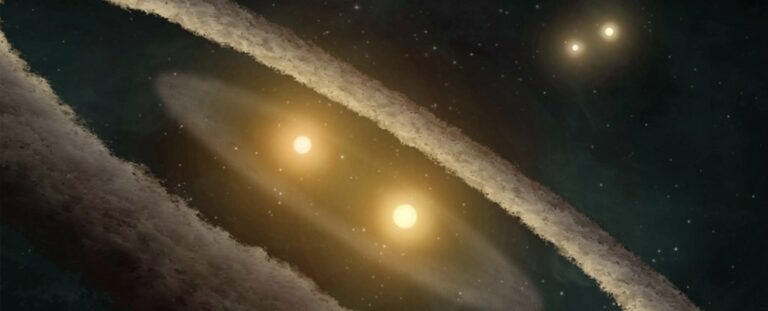Detected Anomalies Indicating Potential Deviation from the Laws of Gravity in Twin Stars
In 1859, Urbain Le Verrier, a French astronomer and mathematician, made an intriguing discovery. He noticed that Mercury was deviating from its expected path around the Sun, defying the predictable precession as predicted by Newtonian physics.

This peculiar anomaly could not be explained by the presence of unknown planets exerting gravitational forces on Mercury’s orbit. Instead, it required the revolutionary insights of physicist Albert Einstein and his general theory of relativity, formulated in 1915. Einstein’s theory describes how gravity creates curves in the fabric of space-time.
Over the past century, Einstein’s general theory has remained robust. However, there are certain aspects of the Universe that his mind-bending model fails to explain. It breaks down in the extreme conditions found at the centers of black holes and during the early stages of the Universe. Additionally, it does not align smoothly with the principles of quantum mechanics. These discrepancies have led some physicists to explore alternative explanations for how gravity operates.
While these alternative ideas are still considered fringe theories, recent discoveries of gravitational anomalies in widely separated binary star systems with extremely low acceleration are once again challenging Einstein’s general theory.
In a new study, astrophysicist Kyu-Hyun Chae from Sejong University in Korea has meticulously analyzed nearly 2,500 wide binary star systems observed by the European Space Agency’s Gaia space telescope. His analysis has led him to conclude that standard gravity is breaking down at specific points within these systems.
Chae initially reported the discovery of gravitational anomalies in mid-2023, based on his study of the orbital motions of wide binary star systems. He believed that these anomalies provided evidence for a theory of modified gravity known as modified Newtonian dynamics (MOND).
However, some physicists disagreed with Chae’s findings and proposed an alternative explanation. They suggested that his sample of star systems had been “contaminated” by the gravitational influence of undetected close companions. In other words, the larger-than-expected accelerations observed by Chae in certain wide binary star systems were likely caused by hidden objects that he had overlooked.
The physicist from Sejong University conducted another round of testing on a refined subset of ‘pure’ binary stars in order to validate his methods. He discovered that twin stars in close orbit were exhibiting behavior consistent with classical Newtonian dynamics, indicating no issues in that regard. However, when it came to binary stars separated by more than 2,000 astronomical units, they seemed to experience a velocity increase at low accelerations, which contradicted the predictions of classical mechanics. This inconsistency persisted regardless of whether hypothetical dark matter was considered in the models.
According to the physicist’s new paper, this gravitational anomaly suggests a breakdown of both Newtonian dynamics and general relativity in low-acceleration scenarios. As a result, it holds significant implications for astrophysics, cosmology, and fundamental physics. The researcher emphasizes the importance of confirming this anomaly through multiple independent studies.
While two studies conducted by the same researcher cannot be considered as independent verification, the physicist believes in the reliability of his methods. However, he acknowledges that the theoretical interpretations of the reported anomaly are still uncertain.
In his paper, the physicist makes bold claims, such as the potential abandonment of the dark matter paradigm and the invalidation of standard cosmology based on general relativity. Such claims require exceptionally strong evidence and replication from multiple sources. Undoubtedly, Chae’s paper will undergo thorough scrutiny from his peers. Nevertheless, it is through discoveries like this that we may uncover solutions to the remaining mysteries surrounding gravity.
Chae concludes by stating that the evidence for the gravity boost in the low-acceleration regime is now sufficiently clear. However, he urges the scientific community to continue gathering further evidence through future observations.
The study has been published in The Astrophysical Journal.
Do not forget to share your opinion with us to provide you with the best posts !





0 Comments